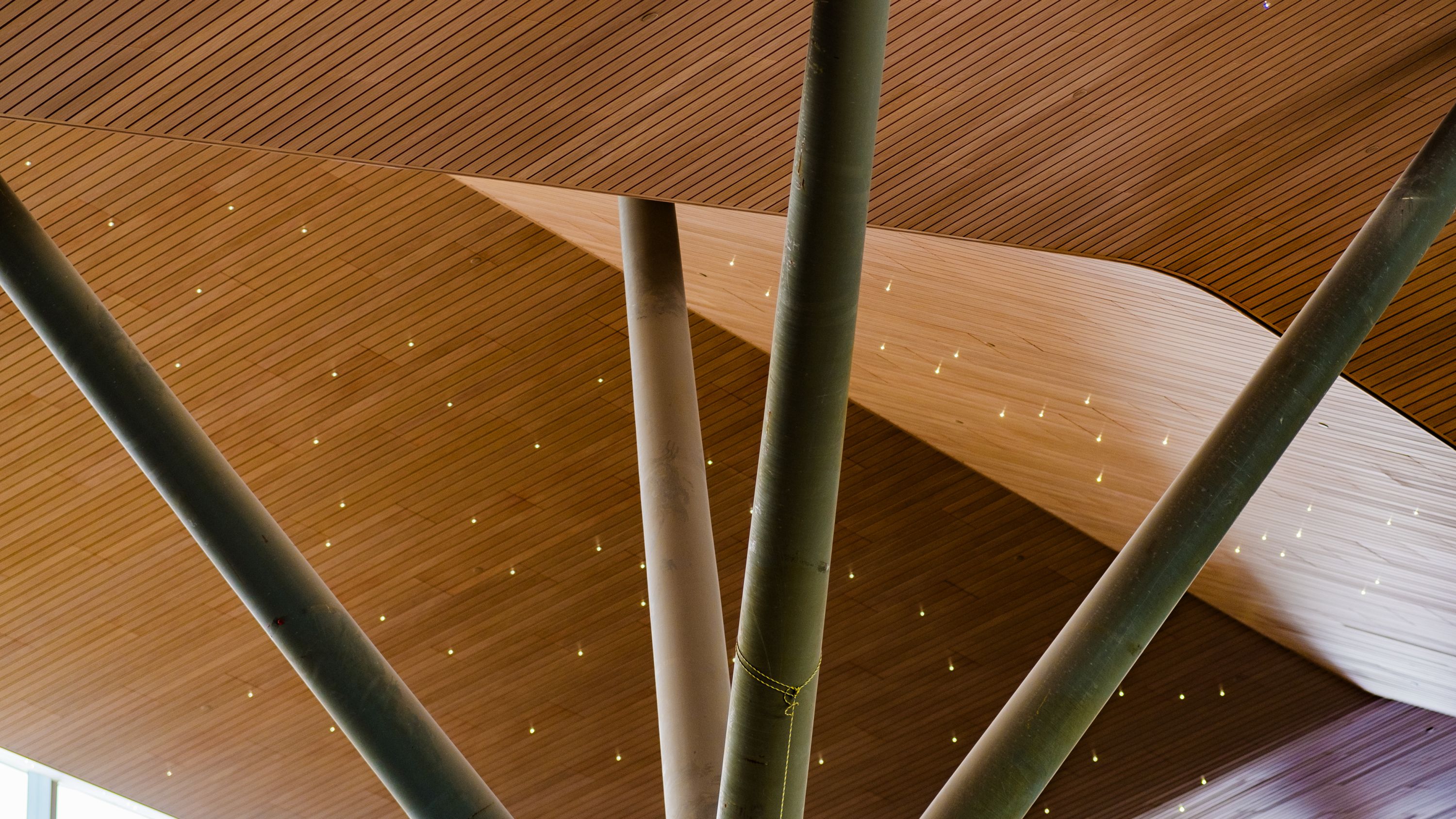PIT’s New Terminal Design Combines Nature, Technology and Community
 The Pittsburgh International Airport (PIT) Terminal Modernization Program (TMP) is more than a construction project. It reimagines the airport experience using the Nature, Technology, Community concept, or NaTeCo. This innovative design philosophy, introduced by luis vidal + architects, one of the architectural design firms working on the TMP, seamlessly integrates natural elements, cutting-edge technology, and a deep sense of regional identity into the new terminal’s design.
The Pittsburgh International Airport (PIT) Terminal Modernization Program (TMP) is more than a construction project. It reimagines the airport experience using the Nature, Technology, Community concept, or NaTeCo. This innovative design philosophy, introduced by luis vidal + architects, one of the architectural design firms working on the TMP, seamlessly integrates natural elements, cutting-edge technology, and a deep sense of regional identity into the new terminal’s design.
NaTeCo resulted from a three-day cultural immersion experience that the Allegheny County Airport Authority (ACAA) provided for the design team when transitioning from the project’s master plan phase to the design phase. During that time, architect Luis Vidal observed, “Pittsburgh is the greenest city I have ever seen. You can see rolling hills and trees from wherever you are. Other cities don’t have that.”
Although PIT is a pioneer in fully embracing NaTeCo-inspired design, elements of the concept have been incorporated into airports in Seattle; Portland, Oregon; Vancouver; Singapore; and Kochi, India.
“The result of the TMP using NaTeCo concepts will be an environment for passengers and the people picking them up that is functional, aesthetically pleasing, and representative of the region,” says Paul Hoback, the ACAA’s Executive Vice President and Chief Development Officer.
“Many airports feel generic and disconnected from their surroundings,” Hoback continues. “The NaTeCo approach embraces the natural landscape, technological innovation, and strong community ties to make the airport experience enjoyable for travelers and non-flyers.”
Nature-inspired design features of the new terminal include an undulating roof that symbolizes rolling hills, wood-like ceilings, large windows that allow natural light to shine through, and metal columns with “branches” of different lengths emanating from the columns to represent the region’s forests. According to Hoback, “The terminal’s interior will look like a pavilion in a forest surrounded by landscaped terraces, so passengers will feel like they are in comfortable surroundings instead of at a typical airport.”
After passengers clear security, they will be allowed to access outdoor terraces and enjoy fresh air before boarding their flights. Outdoor terraces will also be available to passengers prior to clearing security.
Technology-related aspects of the new terminal consist of meeting the computer- and electronics-related needs of passengers, flight crews, ground support teams, and merchants who operate businesses in the terminal. Such requirements include everything from having enough electrical outlets for charging mobile devices to better Wi-Fi to state-of-the-art operational systems that can pinpoint potential operational issues and predictive maintenance.
The terminal will also use the most modern technologies to provide passengers with key information and will use robots to clean floors. Some of those technologies were developed at Carnegie Mellon University and by local companies. Additionally, the building’s design and construction gives the ACAA flexibility to “futureproof” the facility as technologies and market demand change.
The community aspect of the TMP includes having unique outdoor terraces and indoor gathering spaces and providing local businesses with ample opportunities to sell their products and services. “People will want to be in spaces where they can enjoy their surroundings and each other’s company and make the airport a destination,” says Hoback. “Pittsburghers are extremely friendly, and the new terminal will provide opportunities to show this defining characteristic of our region.”